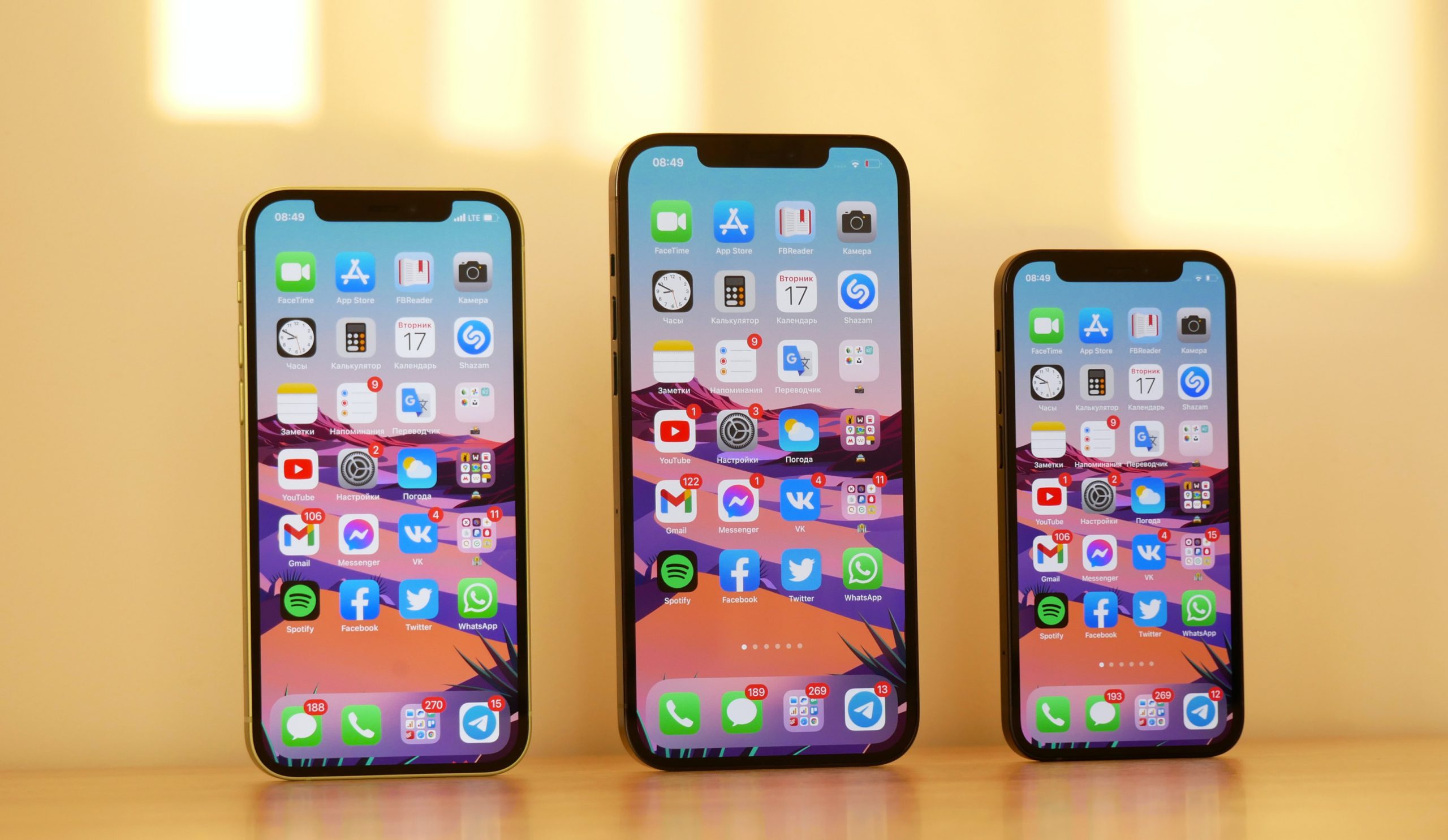Apple plans to produce up to 96 million iPhones for the first half of 2021, a nearly 30% year-on-year increase, after demand for its first-ever 5G handsets surged amid the pandemic, Nikkei Asia learned.
The Cupertino-based tech giant has asked suppliers to build some 95 million to 96 million iPhones, including the latest iPhone 12 range and the older iPhone 11 and iPhone SE, multiple people familiar with the matter told Nikkei Asia — though industrywide shortages of key components could threaten that target.
The tentative full-year forecast that Apple shared with its suppliers suggests it plans to build up to 230 million iPhones in 2021, including both old and new models, the people said. This would mark a 20% rise from 2019, though the target will be regularly reviewed and revised in response to any changes in consumer demand, they added.
“The planned production for the next quarter and the following quarter have been decided and the outlook is quite bright,” an executive at a key Apple supplier told Nikkei. “The iPhone 12 Pro, and iPhone 12 Pro Max are especially stronger than we estimated, while the demand for iPhone 12 is in line with the forecast, but iPhone 12 mini is a bit sluggish,” the person added.
Apple logged two consecutive years of smartphone shipment declines in 2018 and 2019. In the first nine months of this year, its shipments stood at around 116 million iPhones, down just 1% on the year, according to data from research company IDC.
Much of that improvement came from the iPhone 12 range — Apple’s answer to the 5G smartphone offerings of Samsung Electronics and Huawei Technologies — which has enjoyed strong demand since hitting store shelves this quarter. The tentative production plan for 2021 is nearly on par with the record 231.5 million iPhones shipped in 2015.
Apple is also preparing an aggressive production schedule for its high-end computers, including the MacBook Pro and iMac Pro, for 2021, two other people familiar with the matter said. The company is in the midst of replacing Intel central processors in its computer lineups with self-designed CPUs built using technology from British chip designer Arm. Apple already introduced three MacBook models powered by its M1 central processor in late 2020 and announced it will take about two years to fully transition to CPUs designed in-house. The US tech giant is also working on a new Apple TV, a home entertainment device for video-on-demand services, for next year, one of the people said.
Apple’s robust iPhone orders come as the smartphone industry faces two upheavals: a serious component shortage and fierce competition for Huawei’s market share.
Device makers are racing to secure enough crucial components — especially semiconductors and displays, which need several months to manufacture — in anticipation of a post-coronavirus boom in consumer demand.
Apple has already taken components earmarked for iPads and reallocated them for the iPhone 12 range, a move that affected 2 million to 3 million iPads produced this year, Nikkei Asia reported.
Smartphone peer Xiaomi, meanwhile, has given suppliers a bold production target of 240 million smartphones for next year, which is likely to exacerbate the industrywide shortages. Like its peers, Xiaomi is attempting to expand its footprint overseas as Huawei retreats due to US sanctions.
During the pandemic, Apple tried to stockpile as many processor chips as possible to avoid supply chain disruptions. Several market watchers, including CLSA and Jefferies, suggested Apple had cut some orders for its A14 processor chips for the January-March period, though industry executives told Nikkei this more likely reflects a “seasonal adjustment” and that overall demand for the first half of 2021 is still healthy.
“There are so many components that are supposed to go into iPhones, not only core processors,” said one chip industry executive. “Apple’s adjustment indicates they now have enough processors to meet their production plan but are still chasing other needed components.”
Suppliers were initially worried about the prospects of the 5G iPhone 12 range after the pandemic disrupted development and delayed its launch by about a month. In April, when the global health crisis was first ravaging the US, Apple even considered waiting until next year to unveil the lineup.
It has received a warm reception, however, with consumers in the US and China currently facing wait times of up to four weeks for some iPhone 12 Pro models.
Jeff Pu, an analyst with GF Securities, told Nikkei Asia that most suppliers and market watchers foresee rosy demand for 2021, and iPhone shipments will “certainly” return to growth next year. However, there are still uncertainties about the scale of the upside, the analyst said.
“The market is very optimistic about 2021, but we have to be a bit cautious about whether it will really be that great, or just in line with everyone’s expectations. Apple’s iPhone shipment will definitely see a recovery for next year, but overall it will not benefit from Huawei’s loss of market share as much as other players like Samsung, Xiaomi, and Oppo,” Pu said. “Also, we are a bit conservative about its next new iPhone lineup which is set to be released in the second half of 2021. We don’t see the excitement for the new model in 2021 after its first 5G iPhone lineup this year.”
Pu’s company forecast Apple to ship around 220 million iPhones next year.
Apple declined to comment on this story.
